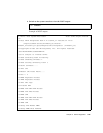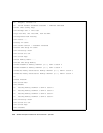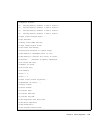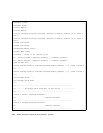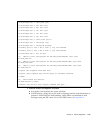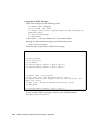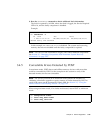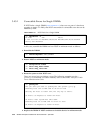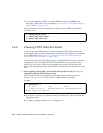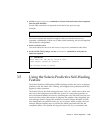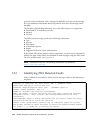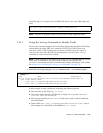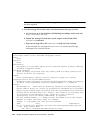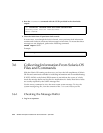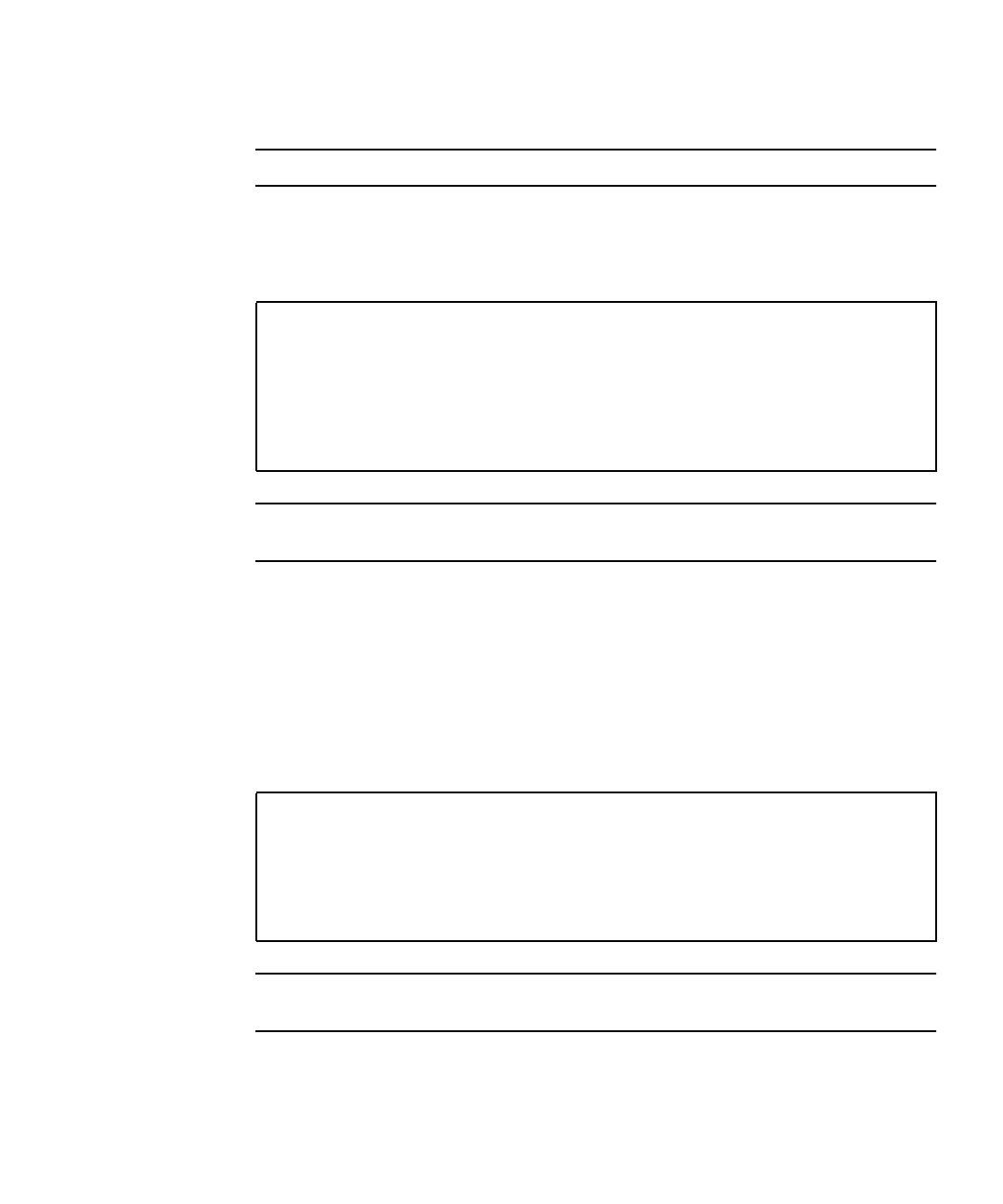
Chapter 3 Server Diagnostics 3-37
3.4.5.2 Determining When to Replace Detected Devices
Note – This section assumes faults are detected by POST in maximum mode.
If a detected device is part of a hardware upgrade or repair, or if POST detects
multiple DIMMs (
CODE EXAMPLE 3-2), replace the detected devices.
Note – The previous example shows two DIMMs on the same channel/rank, which
could be an uncorrectable error.
If the detected device is not a part of a hardware upgrade or repair, use the following
list to examine and repair the fault:
1. If a detected device is not a DIMM, or if more than a single DIMM is detected,
replace the detected devices.
2. If a detected device is a single DIMM and the same DIMM is also detected by
PSH, replace the DIMM (
CODE EXAMPLE 3-3).
Note – The detected DIMM in the previous example must also be replaced because
it exceeds the PSH page retire threshold.
CODE EXAMPLE 3-2 POST Fault for Multiple DIMMs
sc> showfaults -v
ID Time FRU Fault
1 OCT 13 12:47:27 MB/CMP0/CH0/R0/D0 MB/CMP0/CH0/R0/D0 deemed
faulty and disabled
2 OCT 13 12:47:27 MB/CMP0/CH0/R0/D1 MB/CMP0/CH0/R0/D1 deemed
faulty and disabled
CODE EXAMPLE 3-3 PSH and POST Faults on the Same DIMM
sc> showfaults -v
ID Time FRU Fault
0 SEP 09 11:09:26 MB/CMP0/CH0/R0/D0 Host detected fault,
MSGID:SUN4V-8000-DX UUID: 7ee0e46b-ea64-6565-e684-e996963f7b86
1 OCT 13 12:47:27 MB/CMP0/CH0/R0/D0 MB/CMP0/CH0/R0/D0 deemed
faulty and disabled



